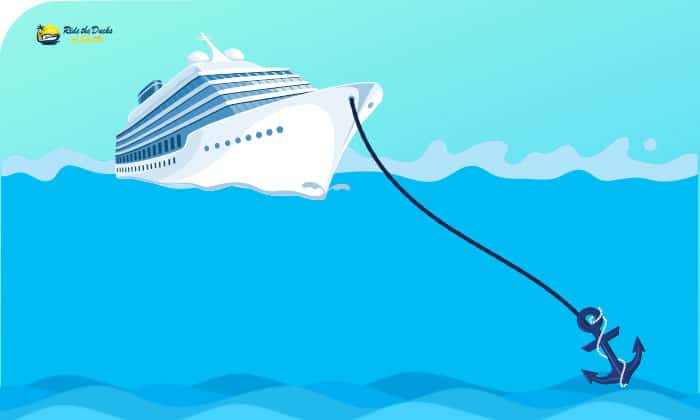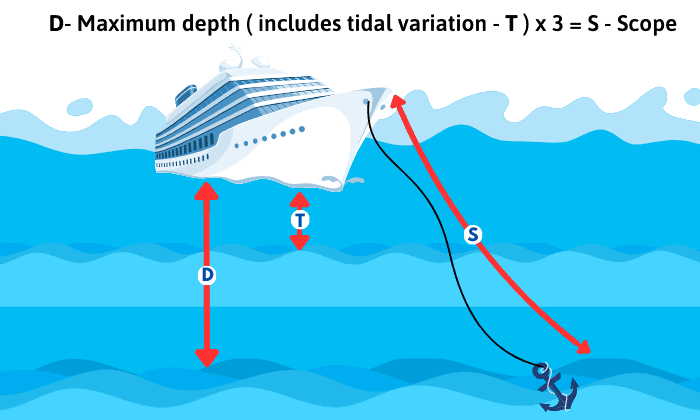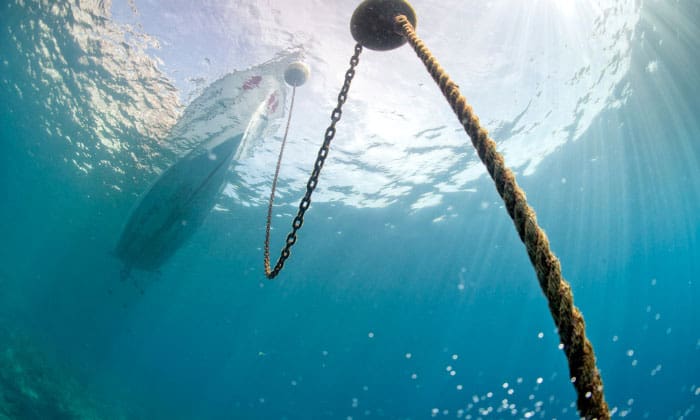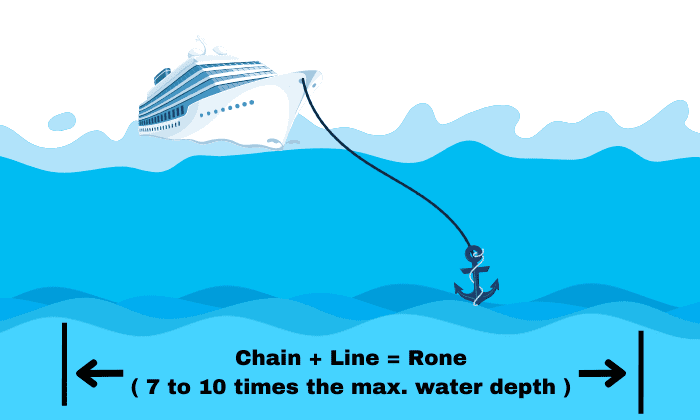“A boat should always be anchored from which section?” is one of the most nagging questions greenhorn sailors ask. Securing a watercraft on the water requires lowering the anchor from the boat’s front section or bow. And there is a valid explanation for this.
So, please continue reading to learn the rationale behind this “rule.”
Table of Contents
Which Section Should You Anchor a Boat From?
If we look at ships, tugboats, yachts, and other watercraft, we will notice the anchor or cleat on the vessel’s forward section. We have yet to see a boat with these security mechanisms in the aft or stern (rear) section.
Look at the image below. Notice how the rusty anchor chain extends from the ship’s bow. This picture also answers the issue of what side of the vessel should you never anchor.
But why is a watercraft’s bow the best place for anchoring? Why can you not secure the anchor from the boat’s rear or stern?
The first reason relates to a watercraft’s inherent design. Looking at a boat from the top, it has a pointed front section and a flat or squarish behind.
Like airplanes with tapered noses, boats have “streamlined” bows to reduce friction as they move on water.
This design also means a lower drag force and less obstruction from the surrounding fluids.
Hence, anchoring boats from the bow allows us to avoid dangerous situations. We reduce friction, enabling our watercraft to “ride” the waves, regardless of how big and powerful they might be.
You will feel more secure and safe. No matter how strong the water current is, the boat’s tapered bow will “cut” through the water and stabilize the vessel.
Look at the image below and appreciate the logic behind these boat anchoring rules. In this picture, the water current moves to the right, extending the anchor line. The boat will not go anywhere because the anchor keeps it within the line’s maximum length.
So, it is now easy to imagine what will happen should the anchor line be secured to the boat’s stern.
Reversing the boat in the picture (put the anchor line at the stern) will make the water hammer against the aft’s flat surface. It could create splashes and swamp the vessel, putting it at risk of sinking.
Even if you anchor a boat in calm waters, there is still the risk of swamping when the part of the boat lower the anchor line is the stern.
Most boats have engines at the aft, making the stern heavier than the bow. An anchor in this section can increase the aft’s weight, lowering the boat’s rear to the waterline.
Not only does stern-based anchoring spoil the fun, but ultimately boating safety is compromised as well.
Lowering an anchor from the stern can entangle the line on the boat’s propeller or rudder, impacting the vessel’s maneuverability. The prop can snag the anchor line and cease working as a result.
The Best Way to Anchor Your Boat Properly
A boat’s bow is the best section to anchor a watercraft from. But what is the best way to anchor your boat properly? What factors should you keep in mind?
Study your boat’s location, including traffic, congestion, sea bottom, tidal condition, weather condition, and underwater structures. You do not want any of these interfering with the anchoring procedure or making it more challenging.
Choosing an area to anchor your vessel is easier after considering these factors. The water must be deep enough, and the bottom either muddy or sandy.
Maneuver your boat upwind of your preferred location. Stop the engine and carefully lower the anchor while slowly backing the vessel downwind until you have lowered the line seven to ten times the water’s depth.
Tie the anchor line to the bow with a cleat hitch knot and tug the line to ensure the anchor is secure and not under tension.
And that describes the best way to anchor your watercraft.
FAQs
What should be avoided when anchoring a boat?
Our trusty boat anchor guide recommends avoiding securing your boat with an anchor line tied to the vessel’s stern. You risk swamping the watercraft, capsizing it, or damaging the propeller and risk everyone’s safety onboard. Avoid reefs, power lines, and areas with wrecks as well.
How long should your anchor line be?
Many boating resources offering anchor tips recommend an anchor line length (anchor rode) of seven to ten times the water depth.
For instance, if you are boating in a 30-foot-deep lake, your anchor rode should be at least 210 feet (30 feet x 7 = 210 feet). Alternatively, you can opt for 300 feet as the maximum (30 feet x 10 = 300 feet).
Please note you can extend the anchor rode (>x10) in choppy waters or bad weather.
Why is it important to lower the anchor from the bow of a vessel instead of the stern?
Boaters must lower the anchor from the bow of a vessel instead of the stern to avoid swamping (water entering the watercraft) and capsizing (sinking).
Although the correct location for anchoring is essential, so is the proper technique for anchoring. Folks should not toss or throw the anchor into the water to avoid tangling the anchor line or laying the anchor the wrong way.
Instead, boaters should lower the anchor as cautiously as possible.
Conclusion
The question, “a boat should always be anchored from which section?” only has one answer. And that would be the vessel’s bow or front part. This boat section naturally “breaks” water, ensuring you avoid swamping and capsizing.
Anchoring the boat from its stern not only increases the risk of swamping and capsizing. It can also raise the likelihood of damaging the hull, propeller, or rudder should the anchor line entangle in the prop.

Ten years of enjoying countless trips on boats never made me love them any less! So I am here to put all those experiences into good use for other boaters who want to have a safe and fun trip with their friends and families.




